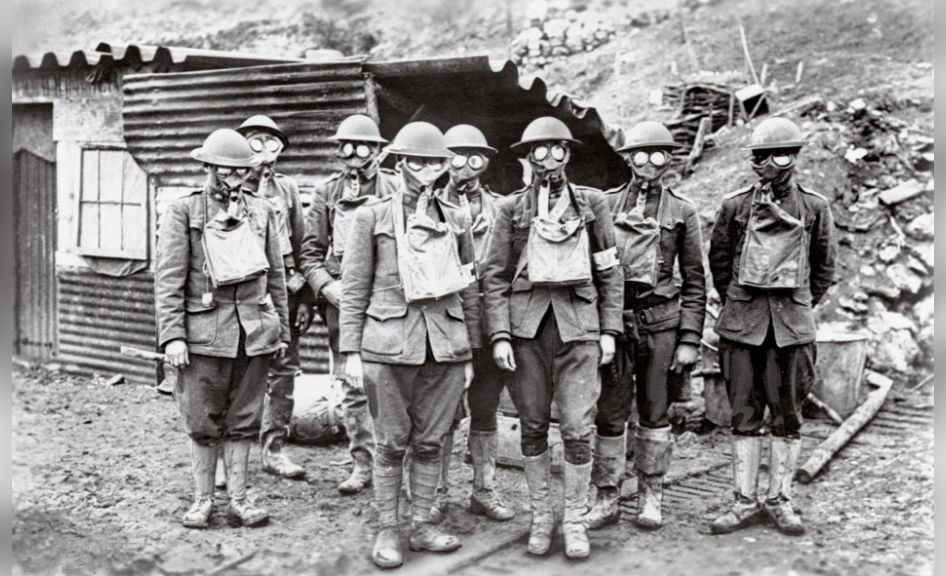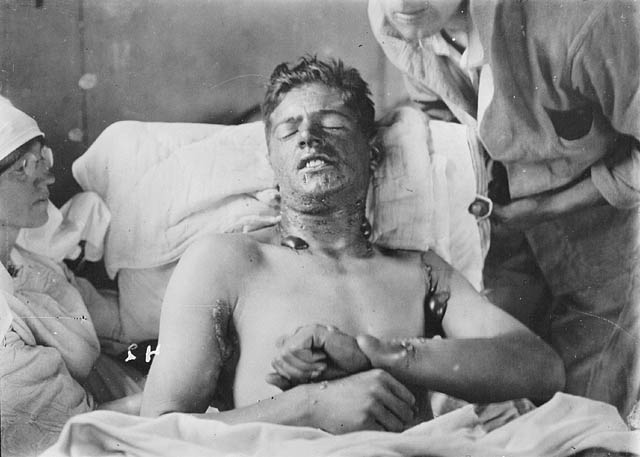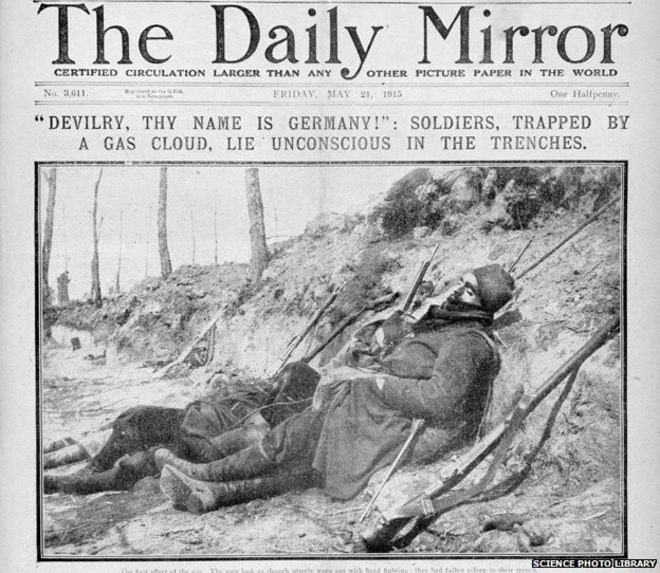World War I
World War I began in 1914 and ended in 1918 with the Central Powers against the Allied Powers. The war developed new technology and weapons as both sides sought to defeat the other, the most pertinent one being the chemical weapon, nitrogen mustard gas. It was made up of compounds stronger than sulfur mustard gas, increasing its toxicity for it to be used as a mass killing gas.
"Although mustard was introduced late in the war, it became known as the “King of Battle Gases” because it eventually caused more chemical casualties than all the other agents combined, including chlorine, phosgene, and cyanogen chloride."
~ "Chemical Warfare and Medical Response During World War I," National Center of Biotechnology Center, 2008.
"At first the troops didn’t notice the gas and were not uncomfortable, but in the course of an hour or so, there was marked inflammation of their eyes. They vomited, and there was erythema of the skin. . . . Later there was severe blistering of the skin, especially where the uniform had been contaminated, and by the time the gassed cases reached the casualty clearing station, the men were virtually blind and had to be led about, each man holding on to the man in front with an orderly in the lead."
~Harry L. Gilchrist account on Mustard gas effects, The Residual Effects of Wartime Gases, 1917.
World War II
Although mustard gas was primarily used as a weapon, it was also observed to have healing properties. During World War II, medical professionals performed experiments with the gas on soldiers to find the extent of the gas' capabilities. Most of them were coerced.
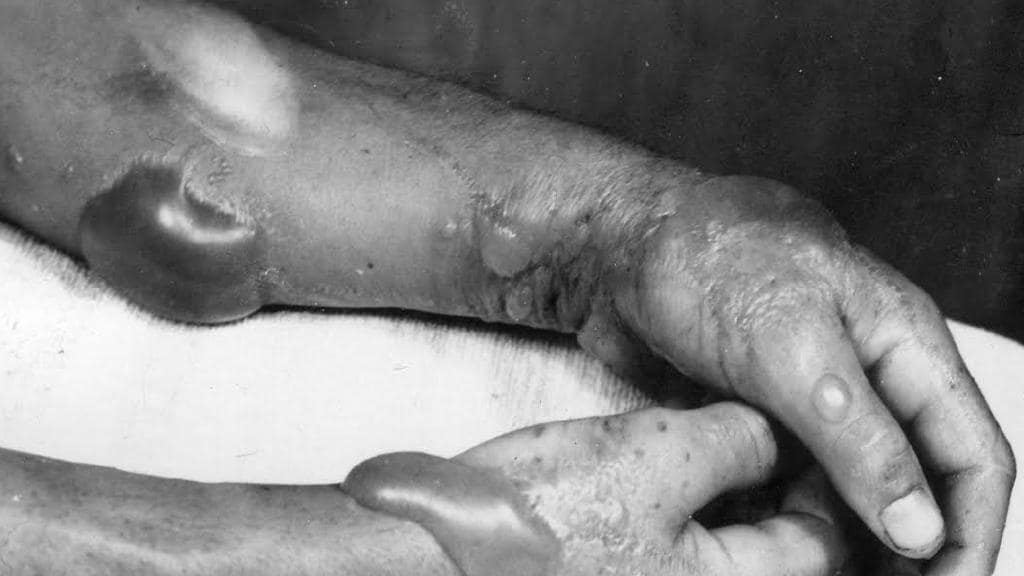
Mustard Gas burns from the book Death by Mustard Gas, Geoff Plunkett, circa 1914.
"All of the World War II experiments with mustard gas were done in secret and weren't recorded on the subjects' official military records. Most do not have proof of what they went through. They received no follow-up health care or monitoring of any kind. And they were sworn to secrecy about the tests under threat of dishonorable discharge and military prison time, leaving some unable to receive adequate medical treatment for their injuries, because they couldn't tell doctors what happened to them."
~ "Secret World War II Chemical Experiments Tested Troops By Race," NPR, 2015.
"While the Pentagon admitted decades ago that it used American troops as test subjects in experiments with mustard gas, until now, officials have never spoken about the tests that grouped subjects by race [...] And it wasn't just African-Americans. Japanese-Americans were used as test subjects, serving as proxies for the enemy so scientists could explore how mustard gas and other chemicals might affect Japanese troops. Puerto Rican soldiers were also singled out."
"According to declassified records and reports published soon after, three types of experiments were done: Patch tests, where liquid mustard gas was applied directly onto test subjects' skin; field tests, where subjects were exposed to gas outdoors in simulated combat settings; and chamber tests, where men were locked inside gas chambers while mustard gas was piped inside."
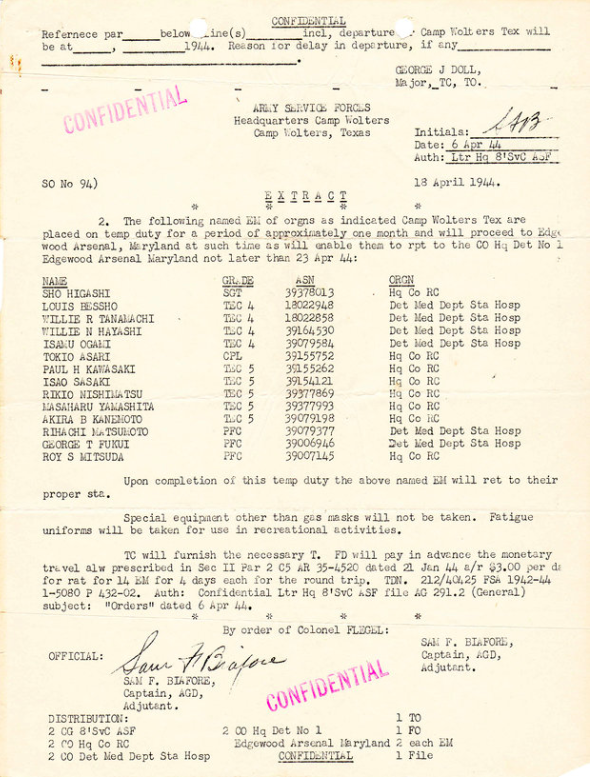
Military orders from April 1944 for Japanese-American soldiers who were part of the military's mustard gas testing at Edgewood Arsenal in Maryland, Marc Bessho
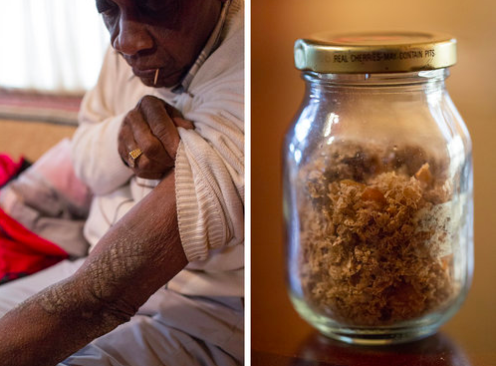
Rollins Edwards shows one of his many scars from exposure to mustard gas in World War II military experiments. More than 70 years after the exposure, his skin still falls off in flakes. For years, he carried around a jar full of the flakes to try to convince people of what happened to him.
"The creation of cancer chemotherapy depended on the contributions of servicemen and people with cancer who participated in experiments with mustard agents. [...] People with cancer took part in therapeutic experiments with mustard agents in hopes of finding some benefits, even if only for a short time. Together, researchers and research participants transformed mustard agents from chemical weapons into medical treatments."
-Susan L. Smith, War! What is it good for? Mustard gas medicine.
Dr. Cornelius Rhoads
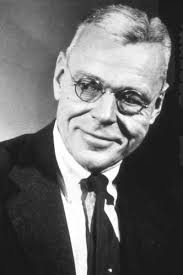
Cornelius Rhoads, circa 1940s
"In 1949, Cornelius P. Rhoads, director of the Memorial Sloan-Kettering Cancer Center, made his famous report on the practical value of nitrogen mustard […] The most valuable outcome of this report was the beginning of massive and direct attack on cancer in humans. Since that time, in fact, there was enthusiasm and interest in studying cancer; physicians have been educated, interested and motivated to treat the disease; investigators became engaged in the search of new growth-inhibiting compounds and research clinicians in the formulation of new treatment strategies."
~Does chemotherapy fulfill its expectations in cancer treatment?, 1990.
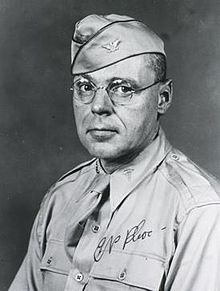
Photograph of Rhoads taken by the U.S. Army, 1943.
True Intentions
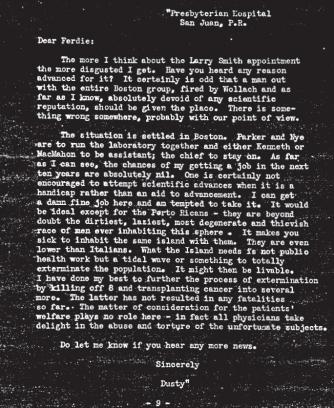
Letter written by Cornelius Rhoads about mass extermination, Feb. 26, 1936.
"In 1931 (Rhoads) used the Puerto Rican population as guinea pigs, injecting patients with cancer cells without their knowledge", said San Juan doctor Hector Pesquera. "At least 13 people died as a result of these experiments." In a letter that was prominently displayed by the local media last week, Rhoads openly bragged about killing Puerto Ricans. "What the island needs is not public health work, but a tidal wave or something to totally exterminate the population"
~"HEALTH: Puerto Ricans Outraged Over Secret Medical Experiments," 2002.
“Rhoads’s medical defenders ridiculed the belief that transplanting cancer could become a tool for genocide, but for lay audiences in the 1930s, the idea may have seemed no less fantastic than the accusations of germ warfare leveled against the Germans in the World War I.”
~ “‘Porto Ricochet’: Joking about Germs, Cancer, and Race Extermination in the 1930s” 2002.
Before Chemotherapy
Project X
